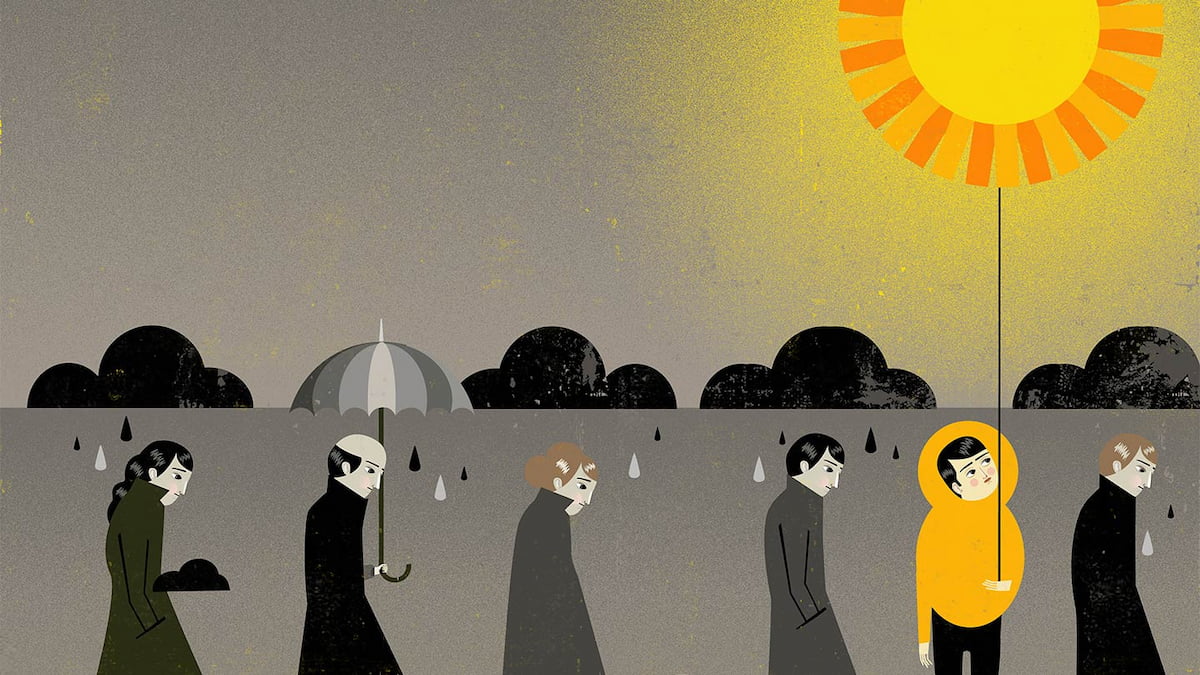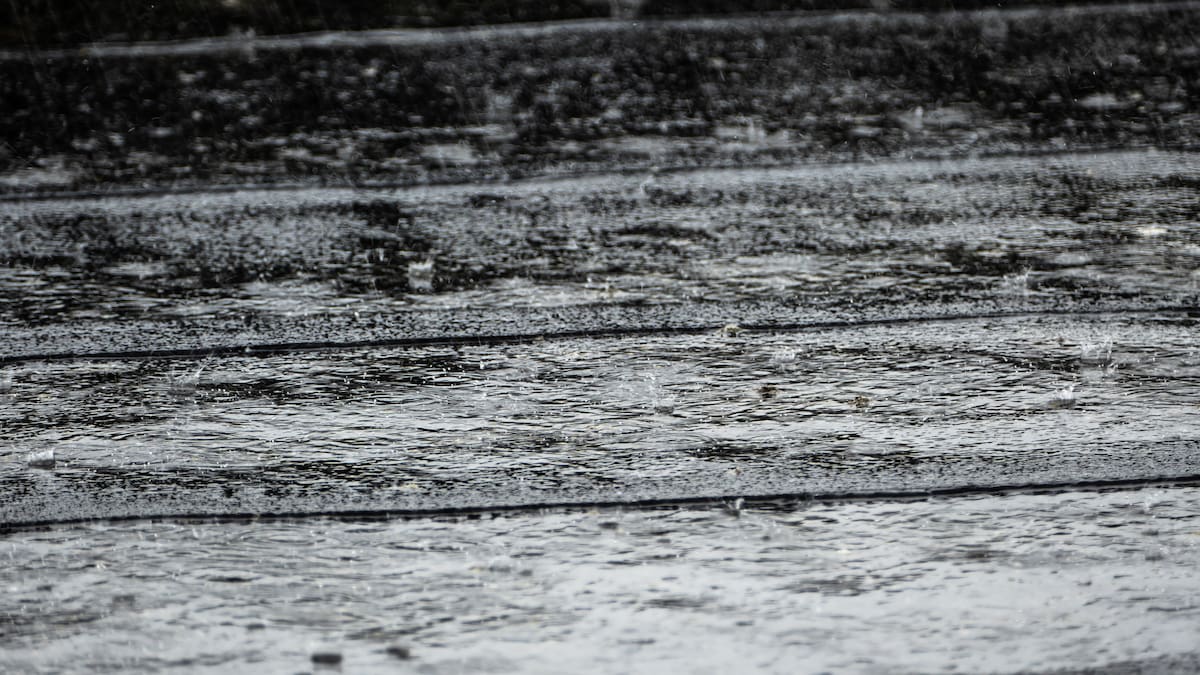
Watch short for this article (5 slides)
The Atmosphere Within: How Weather Influences Your Mood, Energy, and Well-being
Our bodies are finely tuned instruments, constantly interacting with the surrounding environment. Changes in atmospheric conditions – the warmth of the sun, the dampness of high humidity, the shift in barometric pressure before a storm, the amount of daylight – trigger a cascade of physiological responses. These can influence everything from hormone levels and neurotransmitter activity to sleep patterns, energy levels, and ultimately, our mood and behavior. While some people adapt seamlessly, others experience noticeable effects like fatigue, headaches, joint pain, or shifts in emotional state – a phenomenon sometimes broadly termed "meteorosensitivity" or weather sensitivity. Let's explore the science behind how different weather elements impact our internal state, both positively and negatively, and discuss evidence-based strategies for navigating these effects.

Our internal state often mirrors the weather outside, driven by complex physiological responses.
The Bright Side: Positive Weather Influences
Certain weather conditions are frequently associated with improved mood and energy levels, rooted in physiological and psychological responses.
1. Sunshine: Boosting Serotonin and Synchronizing Rhythms
- The Mechanism: Exposure to bright sunlight, particularly morning light, plays a crucial role in regulating our internal biological clock (circadian rhythm) and influencing neurotransmitter production.
- Serotonin Synthesis: Sunlight exposure, partly via Vitamin D synthesis triggered by UVB rays on the skin, is linked to increased production and utilization of serotonin in the brain. Serotonin is a key neurotransmitter associated with mood elevation, feelings of well-being, and calmness. Higher levels are generally correlated with improved mood and reduced symptoms of depression. (Source: NIH - Sunlight, Serotonin, and Skin)
- Circadian Regulation: Bright light exposure, especially in the morning, helps suppress the production of melatonin (the sleep hormone) and reinforces the natural sleep-wake cycle, leading to increased daytime alertness, energy, and potentially better cognitive function.
- The Experience: This physiological boost often translates into feelings of happiness, increased motivation, higher energy levels, and a greater desire to engage in outdoor activities.
2. Moderate Temperatures and Gentle Breezes: Physical Comfort
- The Mechanism: When ambient temperatures are within a comfortable range (generally around 68-77°F or 20-25°C, though this varies individually), our bodies maintain thermal equilibrium with minimal effort. There's less physiological stress from trying to cool down (sweating, vasodilation) or warm up (shivering, vasoconstriction). A gentle breeze enhances convective cooling, aiding comfort, especially in mild warmth.
- The Experience: This lack of thermal stress translates into physical comfort. Muscles may feel more relaxed, and the brain isn't preoccupied with signals of discomfort. This physical ease can contribute to a sense of calm, relaxation, and well-being, making outdoor activities more pleasant.
3. Gentle Rain and Overcast Skies: Calm and Coziness

The sound and sight of gentle rain can induce feelings of calm and relaxation for many.
- The Mechanism:
- Consistent Sound (Pink Noise): The steady, rhythmic sound of light to moderate rain often functions as "pink noise," characterized by stronger lower frequencies than white noise. Studies suggest pink noise can reduce brain wave complexity and promote stable sleep. Its consistency masks jarring background noises, creating a calming auditory environment. (Source: Sleep Foundation - Pink Noise)
- Reduced Light & Stimulation: Overcast skies decrease overall light intensity and reduce visual stimulation, which can be calming for the nervous system and may encourage relaxation and introspection. Lower light levels also permit earlier melatonin release, potentially inducing feelings of restfulness.
- Air Quality Perception: Rain can wash pollutants and pollen from the air, leading to a perception of "cleaner," fresher air post-rainfall, which can be psychologically refreshing.
- The Experience: Many people associate these conditions with coziness, safety (being sheltered indoors), and a "permission" to slow down, read, or engage in relaxing activities, contributing to a sense of peace.
4. Spring Awakening: Psychological and Physiological Renewal
- The Mechanism: Spring's arrival brings multiple changes: increasing daylight hours and intensity (boosting serotonin, resetting circadian rhythms after winter), rising temperatures (promoting comfort and outdoor activity), and the visual stimulus of greening landscapes and blooming flowers.
- The Experience: This combination often triggers a strong psychological response associated with rebirth, optimism, and new beginnings. Physiologically, the increased light and warmth contribute to higher energy levels and improved mood compared to the darker winter months.
The Dark Side: When Weather Negatively Impacts Well-being
Conversely, certain weather patterns can trigger or exacerbate negative physical and emotional states.
1. Seasonal Affective Disorder (SAD): The Winter Blues Deepened
- The Condition: SAD is a type of depression characterized by recurrent episodes, typically starting in fall/winter and remitting in spring/summer. Symptoms include persistent low mood, loss of interest, fatigue, increased sleep, appetite changes (often craving carbohydrates), and difficulty concentrating.
- The Mechanism: The primary trigger is reduced exposure to natural sunlight during shorter autumn and winter days. This lack of light is thought to disrupt circadian rhythms, leading to imbalances in key neurotransmitters and hormones:
- Melatonin Overproduction: Reduced light may cause the brain to produce too much melatonin, leading to increased sleepiness and lethargy.
- Serotonin Reduction: Less sunlight may lead to lower serotonin levels, contributing to depressive symptoms.
- Prevalence: SAD affects a significant portion of the population, particularly in higher latitudes with pronounced seasonal changes in daylight. (Source: National Institute of Mental Health - SAD)
2. Oppressive Heat and High Humidity: Irritability and Fatigue
- The Mechanism: High temperatures, especially when combined with high humidity, put significant stress on the body's thermoregulation system. High humidity hinders the evaporation of sweat, the body's primary cooling mechanism. The body must work harder (increased heart rate, vasodilation) to try and cool down, leading to:
- Physical Discomfort: Feeling hot, sticky, and lethargic.
- Sleep Disruption: Difficulty falling asleep and staying asleep due to inability to lower core body temperature effectively.
- Cognitive Effects: Extreme heat can impair concentration and cognitive performance.
- Physiological Stress: The constant effort to cool down can be physically draining.
- The Experience: This combination of physical discomfort, poor sleep, and physiological strain often manifests psychologically as increased irritability, impatience, reduced tolerance for frustration, and general fatigue or malaise. (Source: APA PsycNet - Example research context on heat & aggression/irritability)
3. Storms and Barometric Pressure Changes: Discomfort and Anxiety
- The Mechanism: While direct mood effects are debated, rapid drops in barometric pressure preceding storms are linked anecdotally and in some studies to physical symptoms in sensitive individuals:
- Headaches/Migraines: Pressure changes may affect sinus cavities or blood vessels in the brain.
- Joint Pain: Changes in external pressure might affect pressure within joints, particularly those affected by arthritis or previous injury.
- The Experience: Physical pain or discomfort directly impacts mood and sleep. Storm-related anxiety can lead to stress, restlessness, and difficulty relaxing.
Strategies for Adaptation and Mitigation
While controlling the weather isn't possible, we can implement strategies to mitigate negative effects and enhance positive ones, based on understanding the underlying mechanisms.
- Strategic Light Exposure (Especially for SAD):
- Light Therapy: Utilize a light therapy box designed to treat SAD. Standard recommendations often involve exposure to 10,000 lux of cool-white, fluorescent light for 20-30 minutes daily, preferably shortly after waking in the morning. Consult a healthcare professional for personalized advice. (Source: Mayo Clinic - Light Therapy)
- Maximize Natural Light: Even on cloudy days, spend time outdoors, especially in the morning. Sit near windows when indoors. Keep curtains open during daylight hours.
- Simulate Dawn: Consider using a dawn simulator alarm clock that gradually increases light intensity before your wake-up time to support a healthy circadian rhythm.
- Consistent Physical Activity:
- Mechanism: Exercise is a proven mood booster, releasing endorphins (natural mood lifters and pain relievers) and other beneficial neurochemicals. It also improves sleep quality and helps regulate circadian rhythms.
- Action: Aim for at least 30 minutes of moderate-intensity exercise (like brisk walking, cycling, jogging) most days of the week. Outdoor exercise provides the added benefit of natural light exposure, but indoor activity is still highly beneficial, especially during inclement weather.
- Optimize Your Indoor Climate (Temperature & Humidity):
- Temperature Control: Maintain indoor temperatures within a comfortable range, using air conditioning or heating as needed. Pay special attention to the bedroom temperature for sleep (ideally 60-67°F / 15.6-19.4°C).
- Humidity Management: Use dehumidifiers in damp conditions (aiming for 30-50% relative humidity) and humidifiers in dry conditions to maintain comfort and respiratory health. Ensure proper ventilation.
- Mindfulness and Relaxation Techniques:
- Mechanism: Techniques like deep breathing exercises, meditation, yoga, or progressive muscle relaxation can help calm the nervous system, reduce stress responses triggered by discomfort or anxiety (e.g., during storms), and improve emotional regulation.
- Action: Dedicate short periods daily to practice these techniques, especially during challenging weather periods. Engage in enjoyable, relaxing hobbies (reading, listening to music, warm baths) to counterbalance weather-related stress.
- Maintain Healthy Sleep Hygiene:
- Consistency is Key: Go to bed and wake up around the same time every day, even on weekends, to stabilize your circadian rhythm, making you less susceptible to weather-induced disruptions.
- Optimize Bedroom Environment: Ensure your bedroom is dark, quiet, and cool, reinforcing the strategies mentioned above.
Conclusion: Cultivating Resilience to Atmospheric Shifts
Weather is an undeniable influence on our internal landscape, capable of lifting our spirits with sunshine or dampening them with persistent gloom. These effects are not merely psychological whims but are rooted in tangible physiological responses to light, temperature, humidity, sound, and potentially pressure changes. Understanding these connections – how sunlight boosts serotonin, how temperature impacts sleep, how humidity affects comfort – empowers us to move beyond passively reacting to the weather.
By proactively managing our exposure to light, engaging in regular physical activity, optimizing our indoor environment, practicing stress-reduction techniques, and maintaining consistent sleep habits, we can build resilience. We can learn to mitigate the negative impacts of challenging weather and amplify the positive effects of favorable conditions, fostering greater emotional balance and well-being regardless of what the forecast holds.